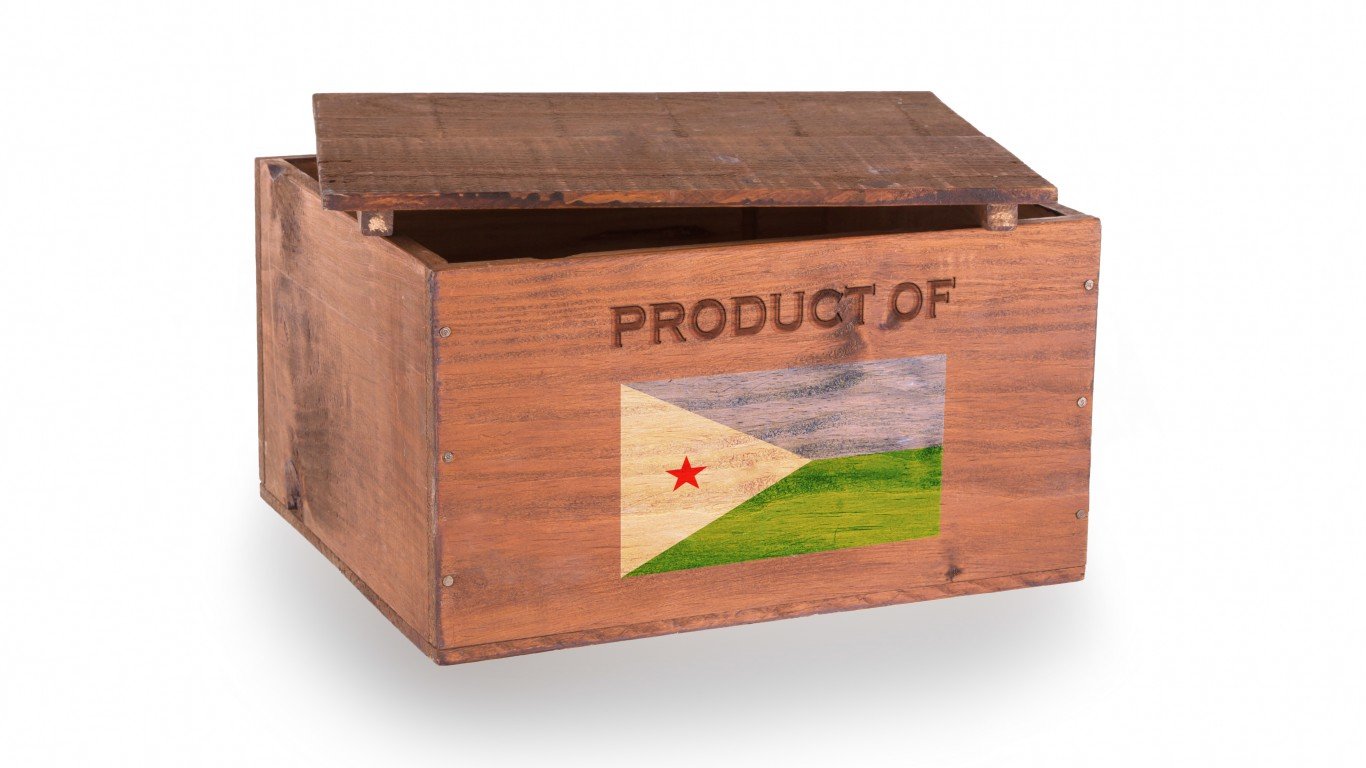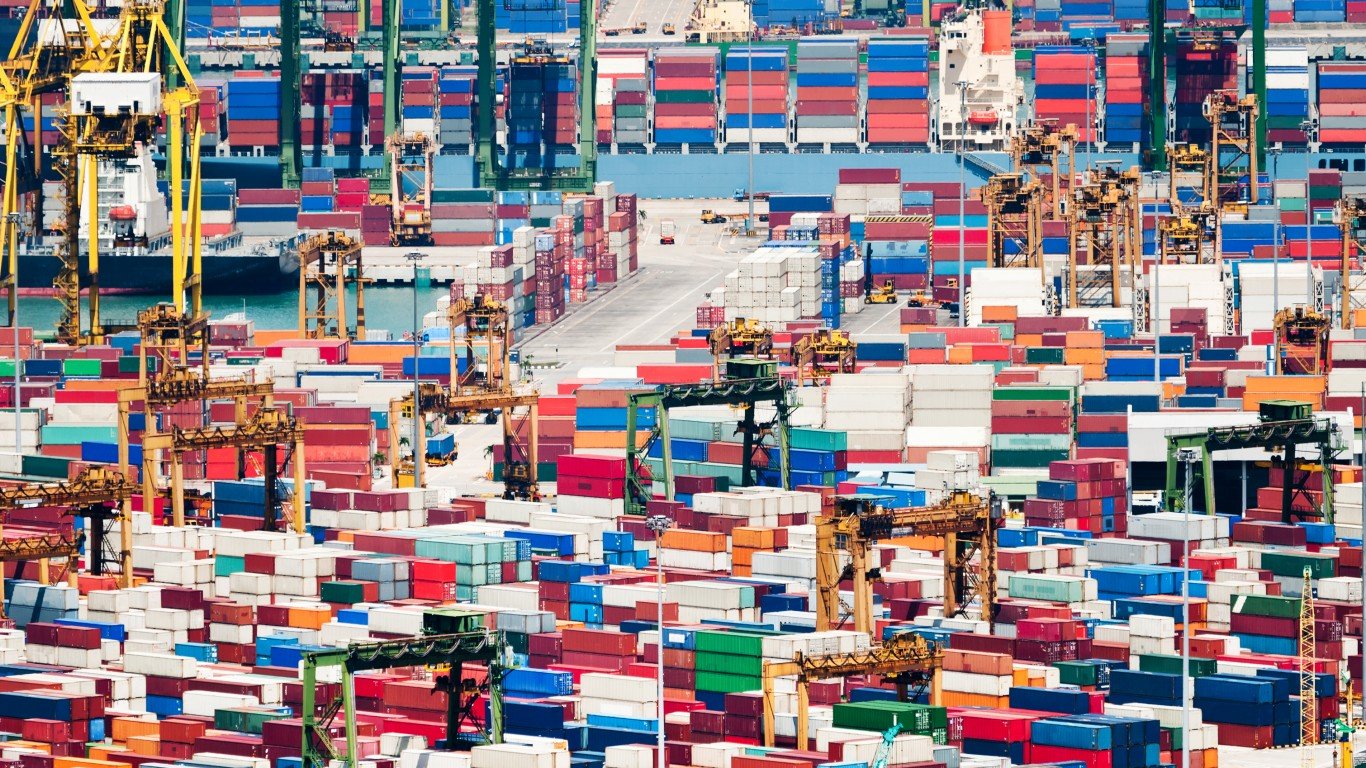
5. Djibouti
> Imports as % of GDP, 2020: 140.33%
> Imports in current US$, 2020: $4.75 billion – #57 lowest of 189 countries
> Trade as % of GDP, 2020: 293.78% – #5 largest of 190 countries
> Exports as % of GDP, 2020: 153.44% – #5 largest of 190 countries
> Exports in current US$, 2020: $5.19 billion – #69 lowest of 189 countries
> GDP in current US$, 2020: $3.38 billion – #30 lowest of 190 countries
Ismaïl Omar Guelleh won a fifth term as president of Djibouti last year, reportedly thanks to a positive economic record. The small impoverished East African republic has a population of about 990,000. The country’s imports were valued at 140% of GDP, though exports were even higher.

4. San Marino
> Imports as % of GDP, 2019: 143.27%
> Imports in current US$, 2019: $2.32 billion – #34 lowest of 189 countries
> Trade as % of GDP, 2019: 307.26% – #4 largest of 190 countries
> Exports as % of GDP, 2019: 164.00% – #4 largest of 190 countries
> Exports in current US$, 2019: $2.65 billion – #52 lowest of 189 countries
> GDP in current US$, 2019: $1.62 billion – #17 lowest of 190 countries
This European microstate landlocked inside Italy has only about 34,000 residents living in 38 square miles whose standard of living is comparable with Italy’s wealthiest. The economy is largely services based, focusing on tourism and banking. The country imports 143% of its GDP, with top imports including electricity, cars, and aluminum, but also exports 164% of GDP. Top export include washing and bottling machines and medications.

3. Singapore
> Imports as % of GDP, 2020: 144.32%
> Imports in current US$, 2020: $490.69 billion – #12 largest of 189 countries
> Trade as % of GDP, 2020: 320.56% – #3 largest of 190 countries
> Exports as % of GDP, 2020: 176.24% – #3 largest of 190 countries
> Exports in current US$, 2020: $599.22 billion – #9 largest of 189 countries
> GDP in current US$, 2020: $340.00 billion – #36 largest of 190 countries
The Southeast Asian city-state of about 5.7 million people was ranked by the conservative Heritage Foundation as the world’s most open, pro-business economy in 2021. The World Bank reports that Singapore’s top exports are led by integrated circuits, petroleum oils, and semi-manufactured gold, making foreign trade the source of most of Singapore’s revenue. The country depends heavily on imports too, with imports worth about 144% of GDP.

2. Luxembourg
> Imports as % of GDP, 2020: 171.60%
> Imports in current US$, 2020: $125.88 billion – #34 largest of 189 countries
> Trade as % of GDP, 2020: 376.30% – the largest of 190 countries
> Exports as % of GDP, 2020: 204.69% – the largest of 190 countries
> Exports in current US$, 2020: $150.15 billion – #34 largest of 189 countries
> GDP in current US$, 2020: $73.35 billion – #70 largest of 190 countries
The primary products of this wealthy landlocked European country of about 632,000 people includes metals, machinery and electronics, and plastic or rubber. It also relies heavily on services, especially banking. According to the World Bank’s latest data, Luxembourg had a negative trade balance, with exports of $150 billion versus imports of $126 billion, or 170% of GDP.

1. Hong Kong SAR, China
> Imports as % of GDP, 2020: 174.92%
> Imports in current US$, 2020: $606.25 billion – #8 largest of 189 countries
> Trade as % of GDP, 2020: 351.66% – #2 largest of 190 countries
> Exports as % of GDP, 2020: 176.74% – #2 largest of 190 countries
> Exports in current US$, 2020: $612.57 billion – #8 largest of 189 countries
> GDP in current US$, 2020: $346.59 billion – #35 largest of 190 countries
The special administrative region of China is the world’s most trade-dependent economy. Both of the country’s imports and exports were worth around 175% of its total GDP for a total trade value of 350% of GDP. This means that while the country has the 35th largest economy by GDP, it has the eighth largest imports and exports values, and the second highest total trade value.
The World Bank estimates that almost 70% of Hong Kong exports consisted of machinery and electronics, while its primary imports include machinery and transportation equipment, manufactured consumer goods, and food and live animals.

 24/7 Tempo
24/7 Tempo




